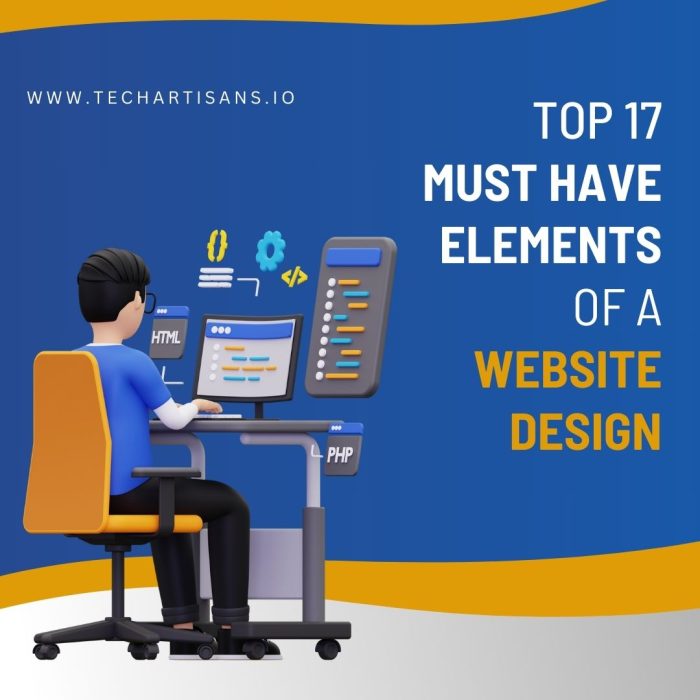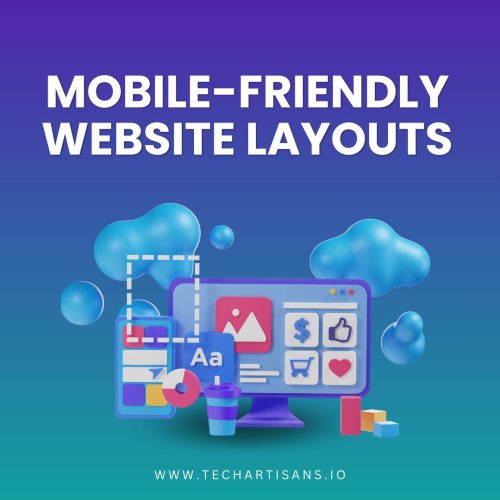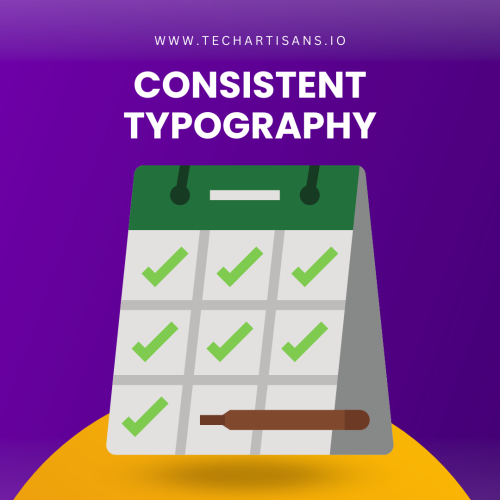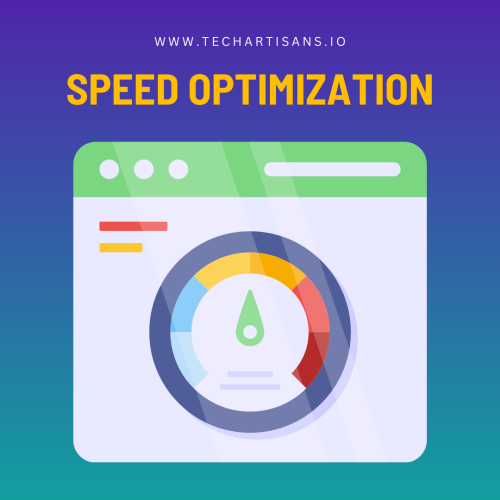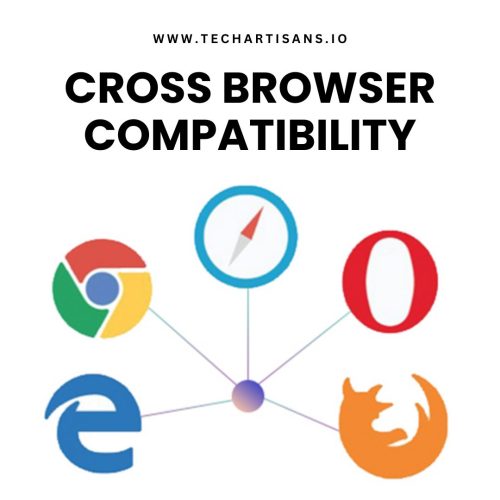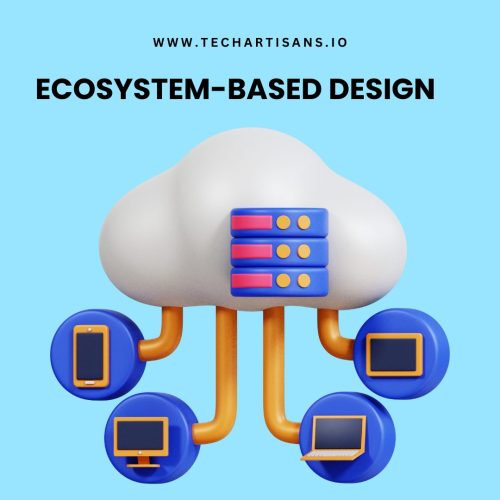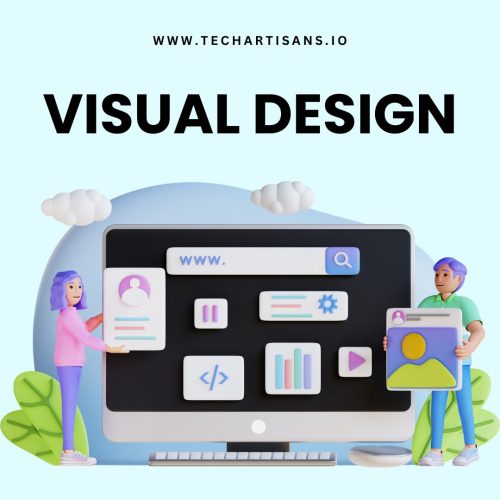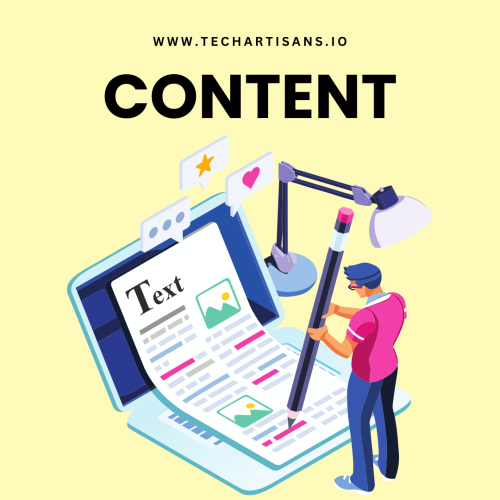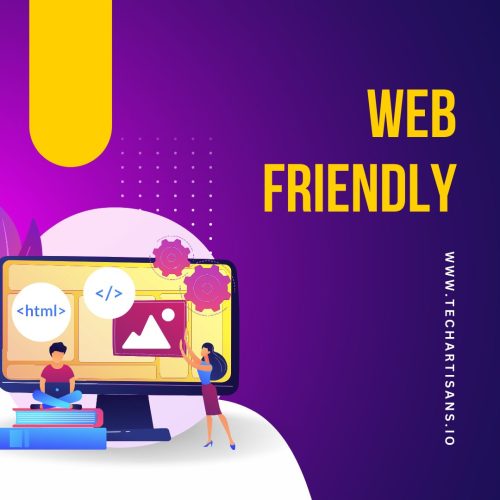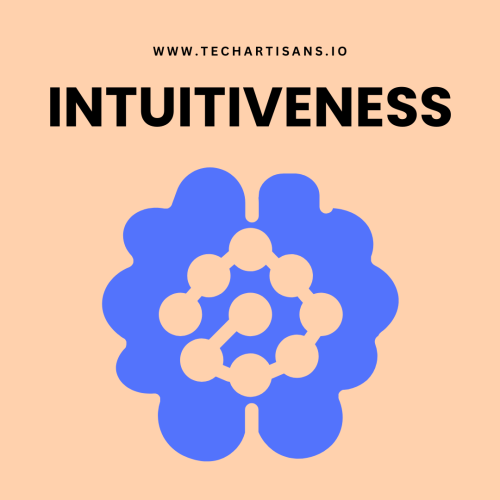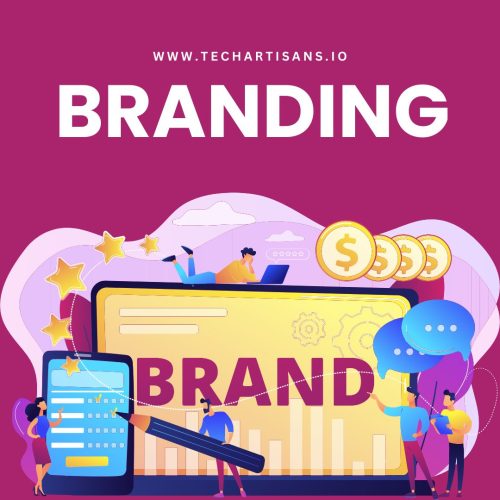The design of a website is critical to providing a satisfying online experience. Modern web design has come a long way from the days of classified newspaper-style websites.
A website that doesn’t function flawlessly or lacks a clean, simple, striking, or captivating design is unlikely to succeed. Effective modern website design elements not only create visual appeal but also boost SEO and CRO efforts, thereby supporting marketing and revenue channels.
While there are numerous web design elements, this article will focus on a few essential key elements of modern web design that can significantly enhance your website’s visual and functional appeal.
Must-Have Website Design Elements
1. Mobile Friendly Website Layouts
Mobile devices, excluding tablets, accounted for 58.99% of global website traffic. This trend is expected to continue as more people prefer using their phones as their primary means of accessing the internet. As a result, 85% of adults believe that web designs should be as good or even better on mobile devices than on desktops.
Learn more about SEO benefits of responsive web design
Any website that doesn’t have a responsive web design and fails to provide a satisfactory user experience (UX) will suffer a loss of traffic, revenue, and credibility.
Mobile Friendly website layouts enable a responsive website that can adapt to various screen sizes without compromising usability and UX.
To have an effective website, designers can use tools such as BrowserStack’s Responsive Design Testing to quickly test the overall mobile-friendliness and optimize it for different devices.
2. Consistent Typography
One essential web design element is safe, clean, and bold typography, Best web design software tools for typography design form the foundation of minimalist design.
Clean typography involves specific features, such as appropriately sized text, usually larger than 16px, black or gray typography that blends with the background hues or images, web-standard fonts, and adequate spacing between lines to enhance readability.
Many organizations use a particular font as part of their brand identity to create its distinct typeset. This ensures it looks professional to the website visitors and promotes brand recognition.
3. Hamburger Menu
Most websites provide users with a long list of options and features, which can simplify navigation by allowing them to access specific options directly from the home page.
However, this approach occupies a considerable amount of screen space, particularly on mobile devices, which can affect the website visitor experience negatively.
To overcome this challenge, a hamburger menu is an ideal solution for modern websites. How to create user flow including hamburger menus. It is a button that expands to reveal a broader menu or navigation drawer, which helps to save space while maintaining clean and uncluttered user interfaces.
This approach allows users to access the various options and features without compromising the ease of navigation on the website.
4. Speed Optimization
If a site loads slowly, not only does this harm the user experience, but it can also be detrimental to your SEO and CRO campaigns.
A delay of just one second in web page response time can lead to a 7% reduction in conversions. These statistics underscore the crucial role of speed in modern web design, both on desktop and mobile devices.
Given the expectation for instant gratification, websites must load quickly, or users will abandon them. The good news is that optimizing core aspects of web design for speed optimization need not be a difficult task. Here are a few quick steps to consider:
- Optimize all images, regardless of size.
- Choose a robust hosting environment, whether VPS hosting, shared hosting, or a dedicated server.
- Use compression to keep files smaller.
- Minimize HTTP requests using Chrome’s Developer Tools.
- Consider using BrowserStack SpeedLab to obtain consolidated reports on website speed metrics.
By following these measures, you can enhance the speed of your website, thereby improving user experience, engagement, and conversions.
Read more about Web performance best practices
5. White Space
White space is a crucial web design element of minimalistic and a good website, as it allows the site to breathe.
In a digital world where users are bombarded with endless amounts of information, it is easy to become overwhelmed and experience intellectual exhaustion. Using a combination of white space and content can ensure that your site looks clean, organized, readable, and easy to navigate.
When it comes to white space, there is much to learn from Apple, one of the design leaders in the tech industry. They have effectively utilized white space in their pre-launch designs, resulting in a clean and minimalist aesthetic that has become synonymous with their brand.
By incorporating white space in your website design, you can create a similar effect, making a visual appearance more appealing, easy to read, and user-friendly.
Find out Template vs. custom website design
6. SEO Optimized Elements
Website design elements play a crucial role in improving a website’s SEO ranking. While some of these website elements are invisible, such as meta tags, heading tags, and HTML coding tweaks in the back end, optimizing them can bring significant benefits to a website’s search ranking on Google.
It’s essential to note that Google places a significant emphasis on speed across its products and services. Therefore, developers and designers must take into account the search engine optimization implications of their web design elements, including the website’s loading speed and optimization of images and other media.
Discover User experience and SEO
7. Cross Browser Compatibility
To ensure that all design elements on a website function flawlessly choose a web hosting provider for better performance across browsers. on every device and browser, thorough testing is essential. The best way to achieve this level of consistency is through iterative testing on real browsers and devices.
Therefore, before launching any new designs or updates, it’s important to verify their performance and compatibility using a browser compatibility matrix. This process helps to ensure that the website functions perfectly across all browsers and devices, providing an optimal user experience.
8. Intuitive Navigation in Modern Website Design
Intuitiveness is an essential aspect of modern web design. A great website should be easy to use for all sorts of web traffic, including children and the elderly.
Whether your team uses hamburgers, accordions, drop-downs, or mega menus, it’s crucial to ensure that your target audience can intuitively understand your website design and navigation.
Any navigation menus errors or overlapping important elements can damage your brand’s credibility. To avoid this, you can use industry-leading techniques such as visual testing.
For example, if you have a food delivery app or website, it’s crucial to thoroughly test the navigation screens on different devices. Automated visual testing can help you scan the entire setup to highlight areas for improvement. Web design checklists for ensuring intuitive navigation. This will ensure smooth and accurate navigation, especially when the presentation of food visuals is crucial.
9. Ecosystem-Based Design
Designing a website purely for aesthetic purposes won’t help you achieve your goals. Your web design elements should align with your brand’s unique selling proposition (USP) or key offerings.
For example, if you’re designing an e-commerce website, your color palette should revolve around red, yellow, blue, and green. Similarly, if you’re creating a health and wellness website, consider a soothing color palette like sky blue, white, purple, and orange.
Designing for the ecosystem that your website caters to should encompass all the core elements. Benefits of having a website for different business ecosystems. As product designers, it’s essential to understand the user’s goals and intentions at different stages of their website journey.
Keeping complexity in mind, enable your visitors to discover simpler web pages first and then guide them to explore more complex sections.
10. Visual Design
Humans are naturally drawn to captivating visuals, making the integration of stunning graphics a powerful method to enhance the allure of your website.
Within a mere blink—roughly 1/10th of a second—your chance to astonish visitors, potentially converting them into valued customers, arises. This sliver of time serves as the critical juncture for your website to communicate its trustworthiness and professionalism, inherently reflecting upon your business.
Striking the ideal balance is key, as an excess of embellishments should be avoided. Features like scrolling text, animated elements, and flashy introductions must be wielded judiciously within your web design, strategically amplifying your message for utmost impact.
Learn more about Hero images that drive conversions
11. Content
Consider this as the beating heart of your website, the very essence that drives its existence. Your content doesn’t merely influence your search engine ranking; it’s the driving force behind why visitors flock to your digital domain.
With a purpose of paramount importance, your website’s text should effortlessly educate, captivate, and deliver in brevity. Crafted with care, your web content and copy possess the magical ability to transform your web design into an enthralling masterpiece, ensuring effectiveness and popularity beyond measure.
12. Web Friendly
Irrespective of the wealth of information, the aesthetic splendor, and the intuitive user-friendly interface woven into your modern website design, their true potential remains dormant without the touch of web-friendliness.
It’s not just about looks, but about ensuring your web developer wields the keys to unlock seamless performance across all the major browsers. Their expertise should encompass the art of meta tags, the finesse of alt tags, and the mastery of SEO sorcery.
A symphony of factors orchestrates your search engine standing and visual allure, underlining the paramount need for your web designers to be virtuosos in their craft. After all, it’s this expertise that shall ultimately transform your digital space into an enchanting, omnipresent experience.
13. Interaction
Unveiling a web design of extraordinary impact, one that hooks your visitors from the very first glance and keeps them spellbound across every single web page, steering them toward that pivotal moment of connection with you.
It’s a magic woven through every pixel and every word, a conjuration known as ‘conversion’ – the ultimate aspiration of your digital realm.
Yet, threading this enchantment requires a delicate dance, for there’s a razor’s edge between ‘interaction’ and ‘irksomeness’. The allure of interaction should never eclipse the treasure trove of benefits waiting to be unearthed.
14. Information Accessibility
Within the realm of your website, not every visitor embarks on an odyssey to explore its entirety. Time may be fleeting, and their quest might narrow down to a mere phone number, an address, or a specific nugget of knowledge.
Thus, the artistry lies in embedding vital details right where they catch the eye, in a space as accessible as a well-trodden path. We all know the frustration of chasing shadows for elusive info, a tango that leaves us vexed.
The impact? A simmering annoyance at best. A discontented traveler on this digital journey won’t linger, won’t savour, and is highly unlikely to revisit, let alone strike a meaningful chord.
15. Intuitveness
Imagine a stellar website that seems to read your visitor’s mind, effortlessly fulfilling their thoughts and wishes. Every element dances in a choreography of logic, orchestrated to resonate with their needs.
When a wanderer scours the vast digital expanse, seeking your products or services through search engines or directories, it’s akin to a grand treasure hunt.
Here’s where your website’s prowess shines: a landing page, an oasis tailored precisely to their quest, eliminating the need for them to navigate a labyrinth of data.
16. Branding
Envision your website as a captivating mirror, faithfully echoing the essence of your business and the very soul of your brand. The moment a visitor sets foot on its digital shores, a symphony of recognition should play between your logo, your tangible creations, and the heart of your physical presence.
This harmonious interplay isn’t just a virtuoso performance in brand memory, but also an alchemical elixir that bestows your enterprise with an aura of authenticity and an elevated image that seamlessly encompasses your entire business tapestry.
17. Turnaround Time
At the forefront of website design grumbles stands the perennial lament of customers: the agonizing wait for their online vision to materialize. Regrettably, the slow march to website completion has become almost customary. Yet, each tick of the clock translates into more than mere time lost.
It translates into opportunities slipped through fingers, value diluted, and aspirations deferred. For a dormant website, lost in the labyrinth of construction or malfunction, holds no sway in the realm of business acquisition.
After all, a website cloaked in invisibility, or stumbling in functionality, is nothing short of a silent spectator in the bustling arena of commerce.
Conclusion
By now, you’ve likely gained insights into the cornerstones of modern web design. Above, we’ve outlined several crucial elements that should grace every website in 2023.
But the journey of elements doesn’t conclude here; a rich tapestry of components collaborates to weave an impactful, conversion-driven web design.
Harnessing these elements of modern web design holds the potential for transformative outcomes. Yet, as we’ve seen with the hamburger menu, experimentation is key.
In your pursuit of a web design that resonates, consider employing these elements of modern web designs. But remember, the real test lies in practice. Test, analyze, and adapt – this iterative approach holds the keys to unlocking your design’s true potential.

